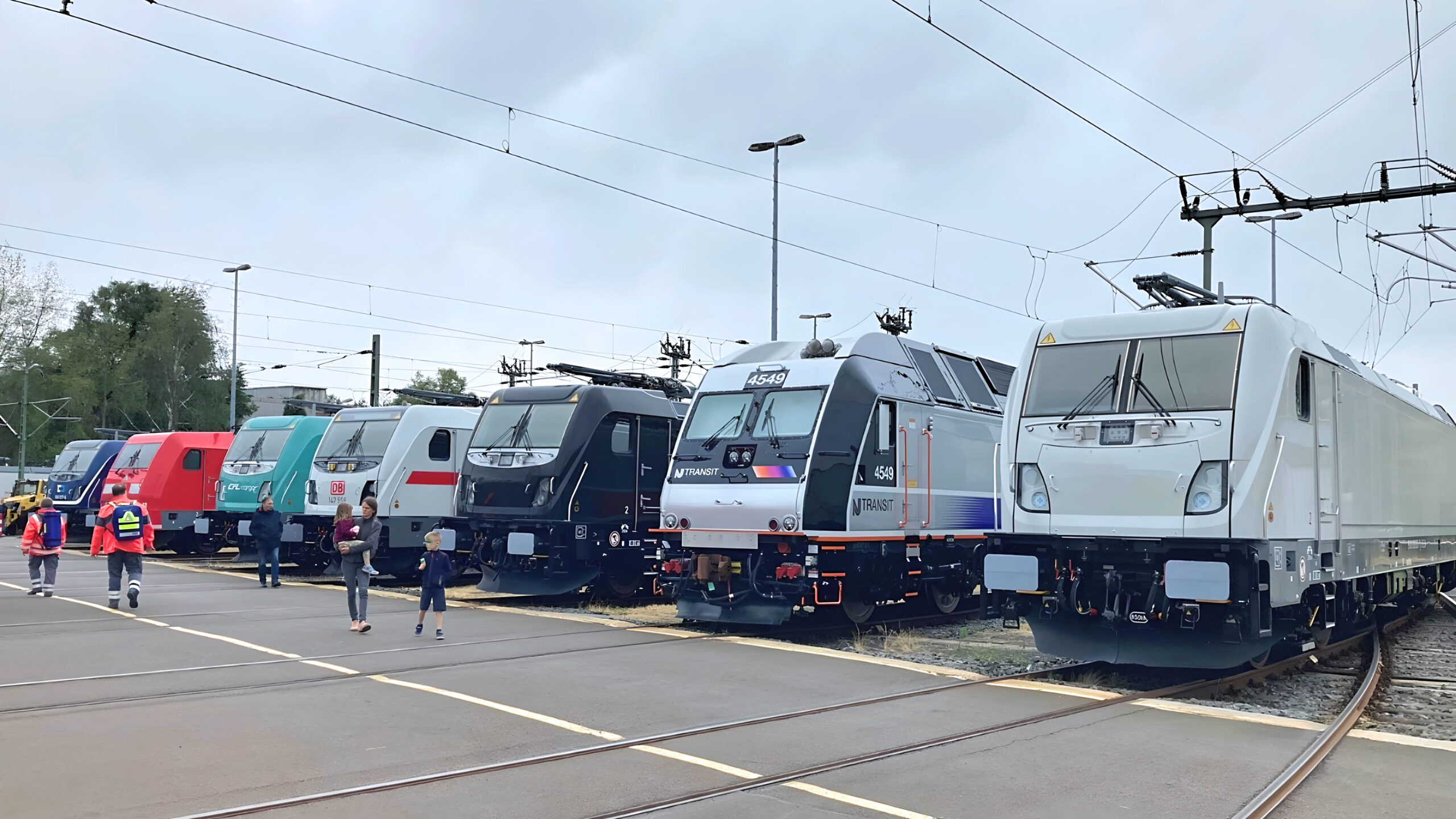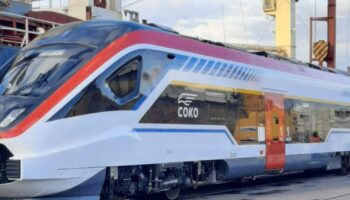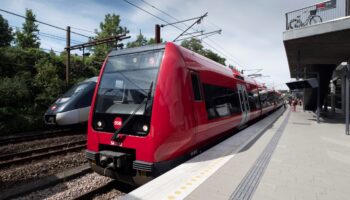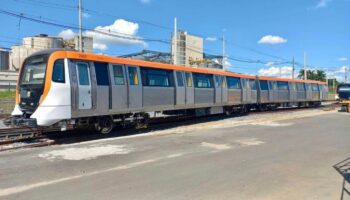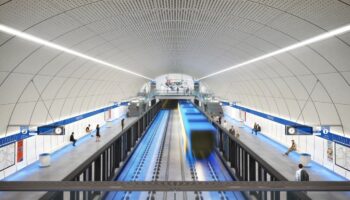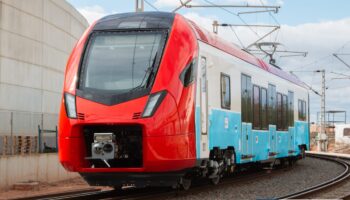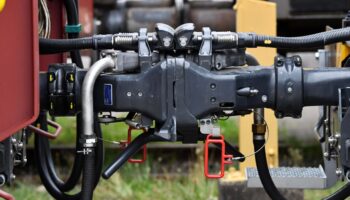EU: The Traxx locomotive platform was invented in the early 2000s and became popular soon after due to its modular traction and signalling system design. According to Alstom, over 2,500 Traxx locomotives have been sold across Europe, North America, Africa, and Central and South Asia. Just this year, the European leasing companies Akiem, Railpool, and Northrail, and the Czech operator RegioJet have ordered 170 locomotives. In August, Frédéric de Kemmeter, who writes for the French website Le Rail, described the development and success of the platform. The ROLLINGSTOCK team has translated and supplemented his essential article.
Evolution of technologies and traction
The significant development of engines during the 1990s–2000s was one of the key factors behind the success of Traxx locomotives. The same can be seen in Siemens Mobility’s Vectron and Alstom’s Prima. The proliferation of silicon semiconductors in the 1970s made it possible to introduce three-phase motors in locomotives and other rolling stock and greatly simplified the design of their electrical equipment.
Then it was the turn of traction effort improvements. The specific power of the asynchronous or synchronous motor is much higher than that of the DC motor. The former usually has a power of 1.4 to 1.6 MW, while the latter of 0.7 to 1 MW. The upgrade did not lead to any loss of power while only four traction motors were installed instead of six. This technological revolution has made it possible to reduce maintenance costs while maintaining the same power or increasing it.
Modern four-axle locomotives operated in Europe are equipped with four three-phase motors to haul heavy freight trains.
How Traxx came to be
1994 was the year when the operators of the two German states merged: Deutsche Bundesbahn of the West Germany and Deutsche Reichsbahn of the East Germany. A single national operator, Deutsche Bahn (DB), emerged in a united Germany, where a railway reform began. Then, DB’s fleet was divided among three divisions: regional passenger, mainline passenger, and freight; and the need for a universal locomotive was eliminated. In late 1993, the operator’s divisions announced tenders for electric locomotives suited to their requirements. In November 1994, the company selected two suppliers. The Swedish-Swiss ABB was to supply 145 locomotives for the mainline division, while the German AEG was ordered 80 locomotives for freight operations.
ABB developed the 6.4 MW Class 101 AC electric locomotive with three-phase asynchronous motors dubbed Eco2000. Its concept emerged back in the early 1990s. The new vehicle rested on Flexifloat bogies with a wheelbase of 2,650 mm, had disc brakes and traction transformers, and its inverters used GTO thyristors cooled with biodegradable ester. Later, the first generation of Traxx used its inverters and transformer design as inspiration. Since 1992, the Eco2000 concept has been successfully tested on two Class 120 locomotives. In July 1996, ABB presented the first Class 101 electric locomotive, and a year later began its serial production to fulfil DB’s order.
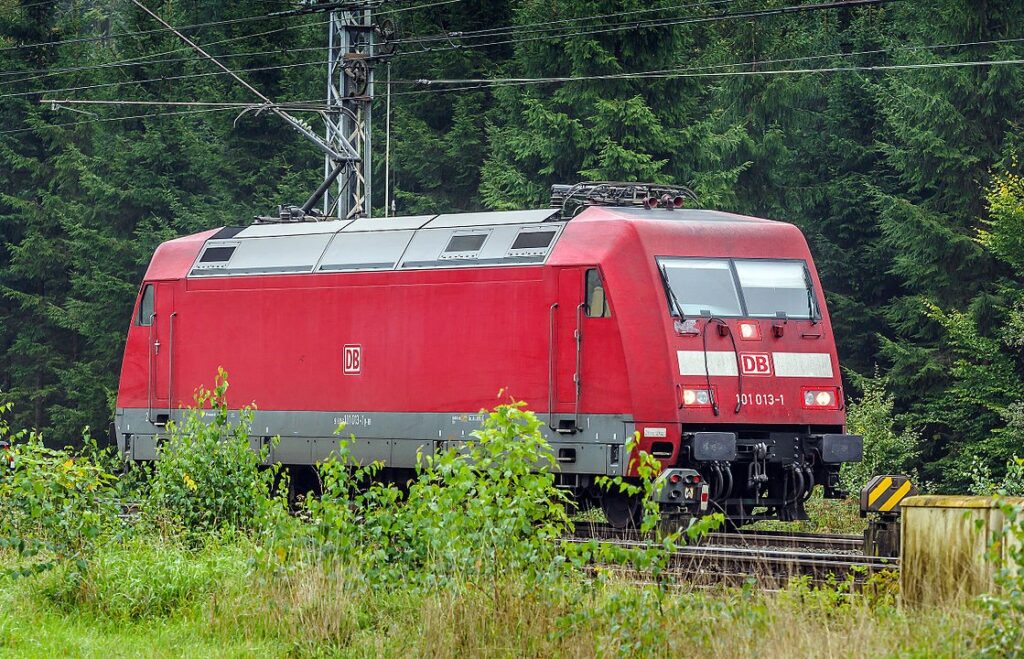 ABB’s Class 101 electric locomotive. Source: Frans Berkelaar/flickr.com
ABB’s Class 101 electric locomotive. Source: Frans Berkelaar/flickr.com
In 1994, AEG introduced the prototype electric locomotive 12X. In addition to three-phase asynchronous motors, it had several innovative solutions: water-cooled inverters on GTO thyristors, a traction motor with motor axle bearings, and a wheelbase bogie of 2,600 mm.
In 1996, ABB and AEG merged their rolling stock units to form ABB Daimler Benz Transportation (ADtranz). In September of the same year, the 12X prototype was delivered to the former ABB’s Zurich plant for modernisation. The following year it became the first-ever electric locomotive with IGBT-based converters and a new control electronic system, Mitrac. Both technologies were later used in Traxx locomotives.
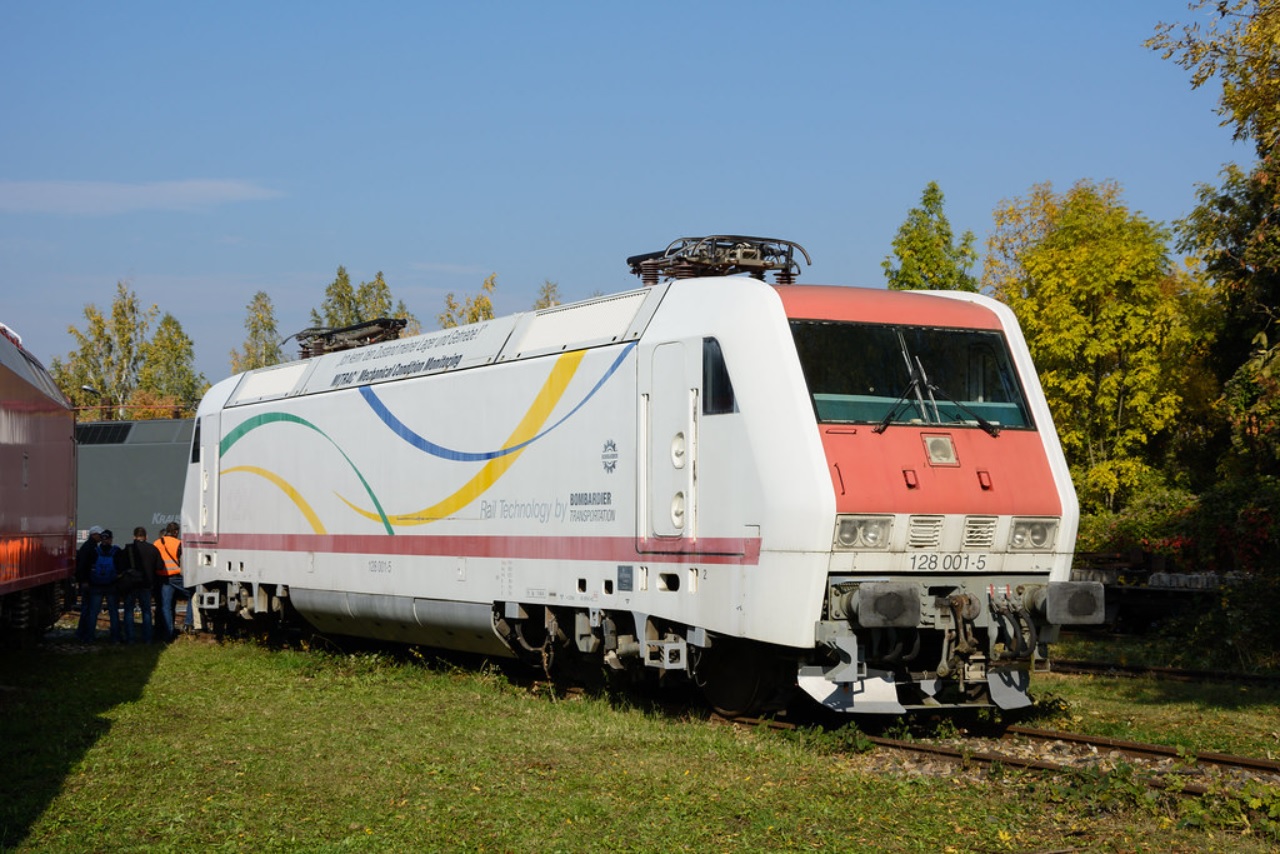 AEG’s prototype electric locomotive 12X. Source: Michael E. Klab/flickr.com
AEG’s prototype electric locomotive 12X. Source: Michael E. Klab/flickr.com
The experience the rolling stock manufacturers gained while developing 12X led to the creation of the 4.2 MW Class 145 AC electric locomotive, which was supplied to DB from 1997.
Bombardier Transportation enters Europe and launches the first Traxx
While some companies were leaving the rolling stock market and others were entering it in the 1990s, Bombardier Transportation began buying up assets in Europe. From 1988 to 1998, it acquired Brugeoise & Nivelles in Belgium, ANF-Industrie in France, and Waggonfabrik Talbot, Deutsche Waggonbau, and DWA in Germany. The biggest acquisition happened in 2001, when ADtranz became part of the Canadian company, and Bombardier included the BR 101 and BR 145 electric locomotives in its portfolio.
In 1998, DB’s freight division contracted ADtranz to supply 400 dual-system electric locomotives, which were assigned Class 185. Their design was based on Class 145 locos, including the running gear, motors, transformer, and ester-cooled inverters. Class 185 locomotives had four current collectors, twice as many as their predecessors. The layout changes in the engine room required to move some components to the roof. Together with additional devices for 25 kV lines, this resulted in a change to the roof and air intakes. The new train control system, ETCS/ERT-MS, enabled the trains to run as per European standards.
On 1 July 2000, the first Class 185 electric locomotive was presented in Kassel, Germany. After tests on three prototypes, serial production began in 2001.
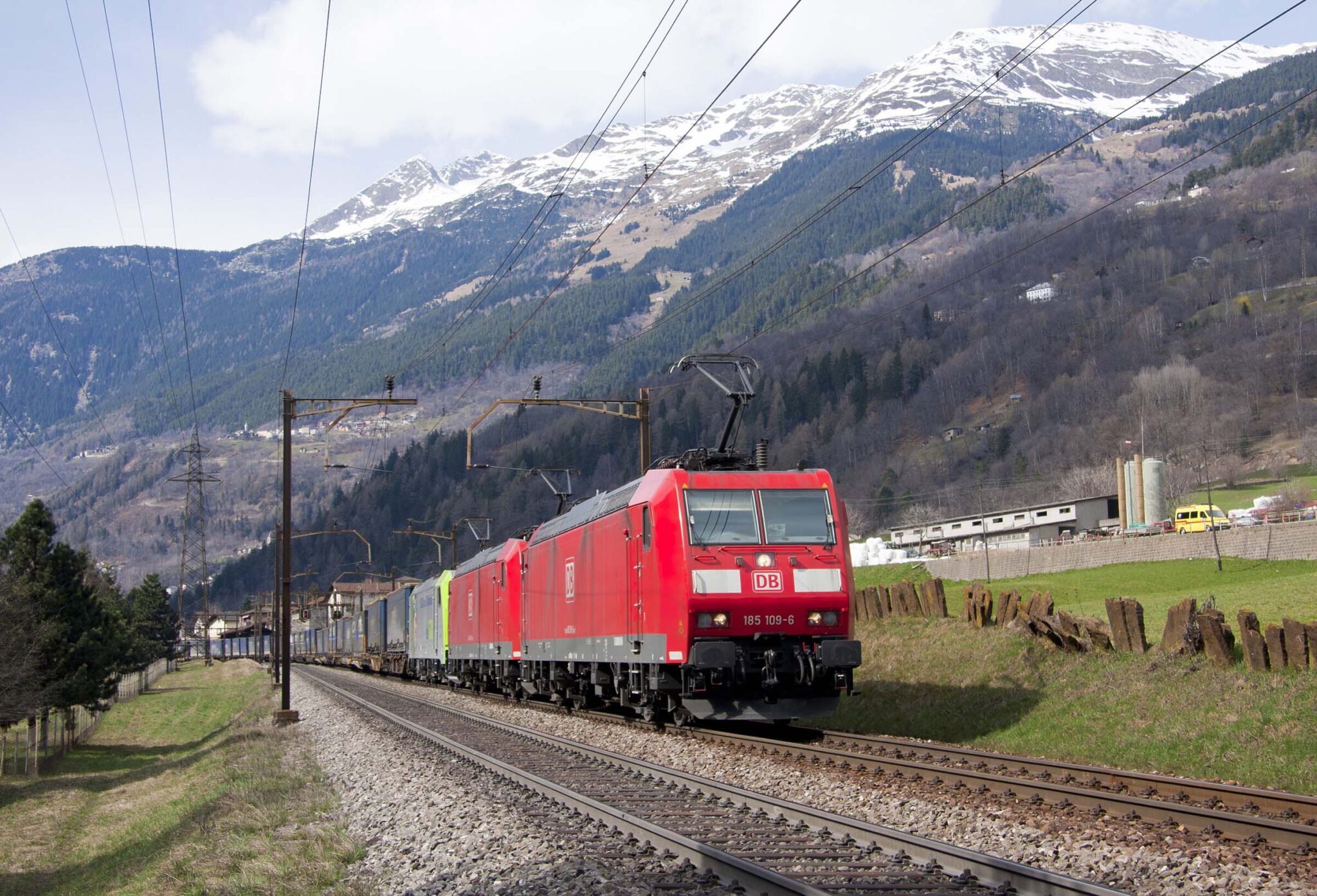 Class 185 electric locomotive in Switzerland. Source: Pascal Zingg
Class 185 electric locomotive in Switzerland. Source: Pascal Zingg
After taking over ADtranz in September 2003, Bombardier Transportation renamed Class 185 as Traxx. This means Transnational Railway Applications with eXtreme fleXibility. These locomotives are identified by the word Traxx, letter F for freight vehicles, and P for passenger vehicles followed by the maximum operating speed and the current type: AC for alternating, DC for direct current, or MS for multi-system.
The Traxx electric locomotives of the first generation have steel body shells, two bogies with two powered axles, three-phase asynchronous motors, cooling exhausts, and disc brakes. They were delivered to Germany, Switzerland, and Luxembourg. The last vehicle was made in 2006.
Traxx 2.0
The upgrade of the platform did not stop, and in 2004, Traxx 2.0 appeared, in which Bombardier Transportation combined AC and DC technologies. An electric locomotive representative of this generation is the F140 AC2. The manufacturer worked on combining AC and DC technologies as it could clearly see the potential for operating the locomotive across European countries. The operators, however, did not grasp the benefits that such a locomotive would bring to transportation throughout the EU’s areas with various power supply systems. Indeed, there are DC systems of 1.5 kV and 3 kV and AC systems of 15 and 25 kV in a relatively small region of Europe, and the Canadian company offered the solution.
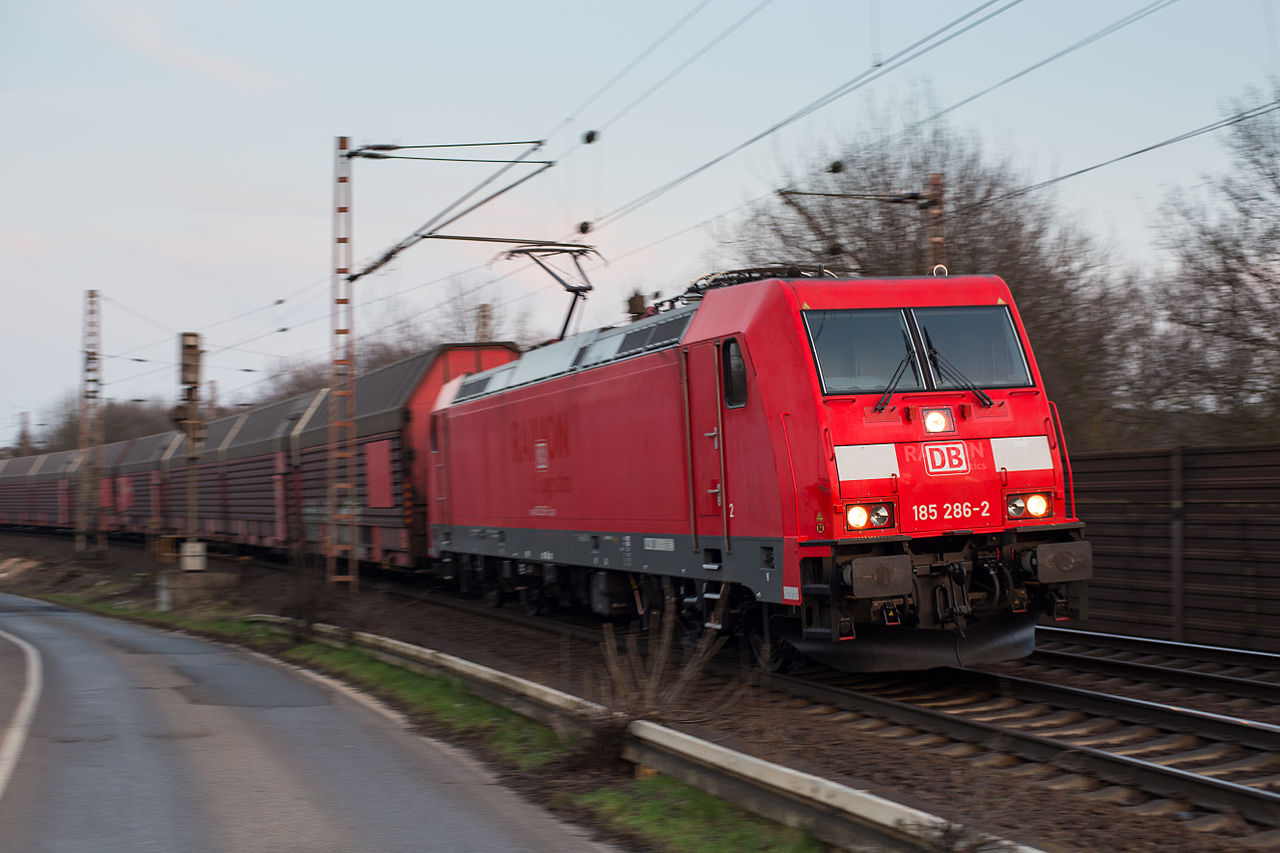 The mainline freight electric locomotive Traxx F140 AC2 in Hanover, Germany. Source: ChristianSchd/wikimedia.org
The mainline freight electric locomotive Traxx F140 AC2 in Hanover, Germany. Source: ChristianSchd/wikimedia.org
Bombardier significantly changed the basic design, and the new body and driver’s cab now complied with crashworthiness standards. The manufacturer substituted GTO thyristor inverters with IGBT ones and replaced the ester used for cooling the inverters and main transformer with water. The Traxx 2.0 controlled each axle individually, instead of just the bogie as before, and the bogie frame was reinforced to enable an axle load of 22 t. The locomotives were assembled at two locations: in Germany and Italy.
In January 2005, the first F140 AC2 loco was delivered to DB, and its series production ceased in 2021. During these years, customers received 393 electric locomotives.
In 2006, the body and power equipment were changed again; this is how the multi-system (MS) and diesel-engine (DE) versions were introduced. With the new F140 MS, Bombardier Transportation entered the international market. Potential customers, mainly leasing companies, wanted train control systems that allowed them to operate a loco in four or five countries where ETCS was not supported. In response, the manufacturer developed three options for operation in:
-
- Germany, Austria, Switzerland, and Italy;
- Germany, Austria, Belgium, and Netherlands;
- Germany, Austria, and Poland.
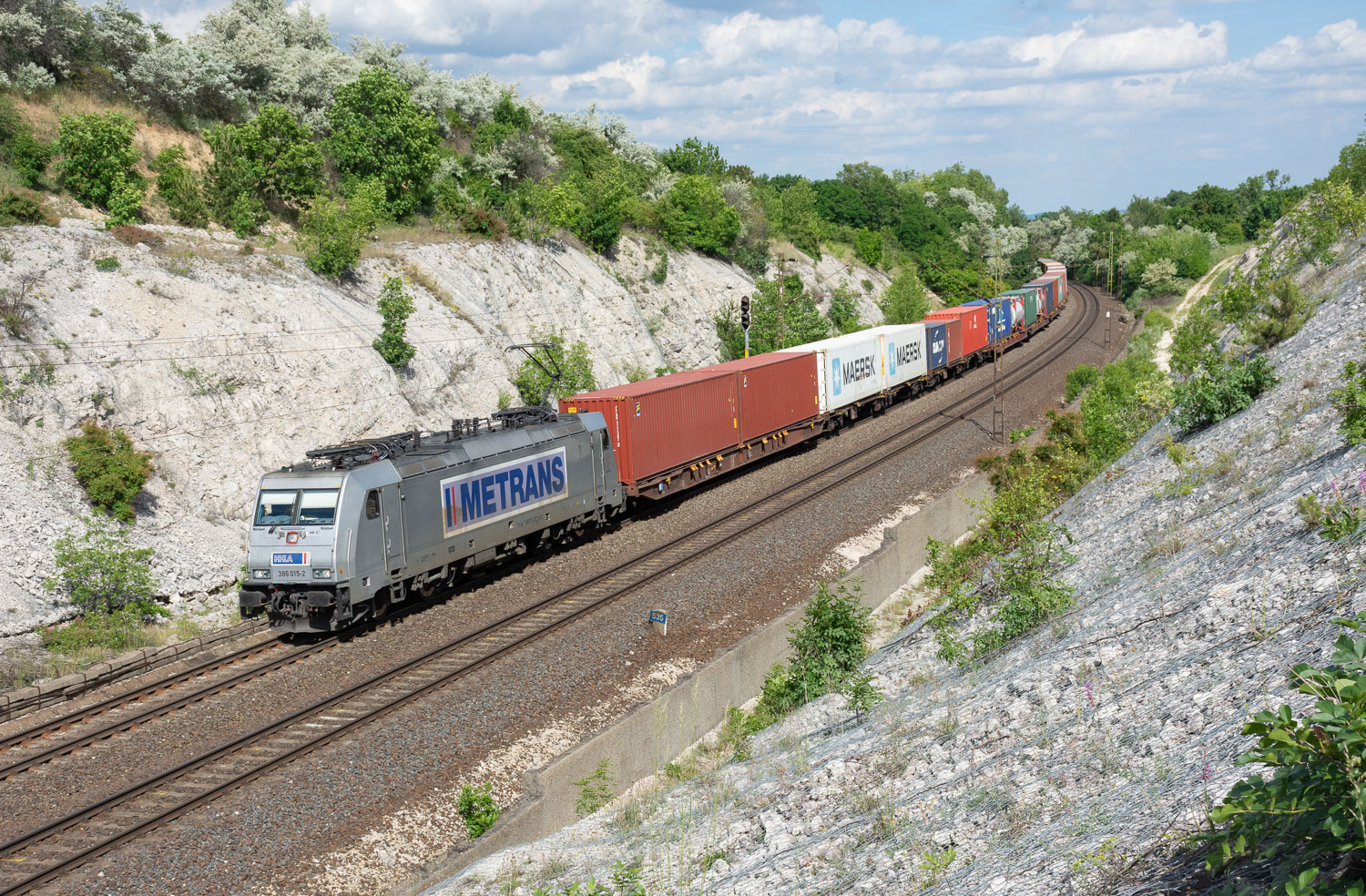 The multi-system mainline freight electric locomotive Traxx F140 MS in Hungary. Source: Richard Hagues/railgallery.ru
The multi-system mainline freight electric locomotive Traxx F140 MS in Hungary. Source: Richard Hagues/railgallery.ru
With a locomotive that complies with international standards and can operate across regions with different train control systems, the Canadian company dominated markets of countries using DC lines such as Belgium, the Netherlands, Luxembourg, Italy, Poland, and France. Then Bombardier expanded across the rest of Europe, including Scandinavia.
Traxx 3.0
The first Traxx 3.0 locomotive was the AC3, which was unveiled in May 2011. Like the AC1 and AC2, it was designed for 15 kV and 25 kV AC networks, had a capacity of 5.6 MW, and a starting tractive effort of 300 kN. By customers’ request, the electric locomotive could be supplied with a 230 kW diesel engine or a 290 kW battery for last-mile operation. The AC3 locomotives were the first to be structurally equipped for the installation of ETCS. Their core customers were DB, which ordered over 170 vehicles, and leasing firms Railpool and Akiem.
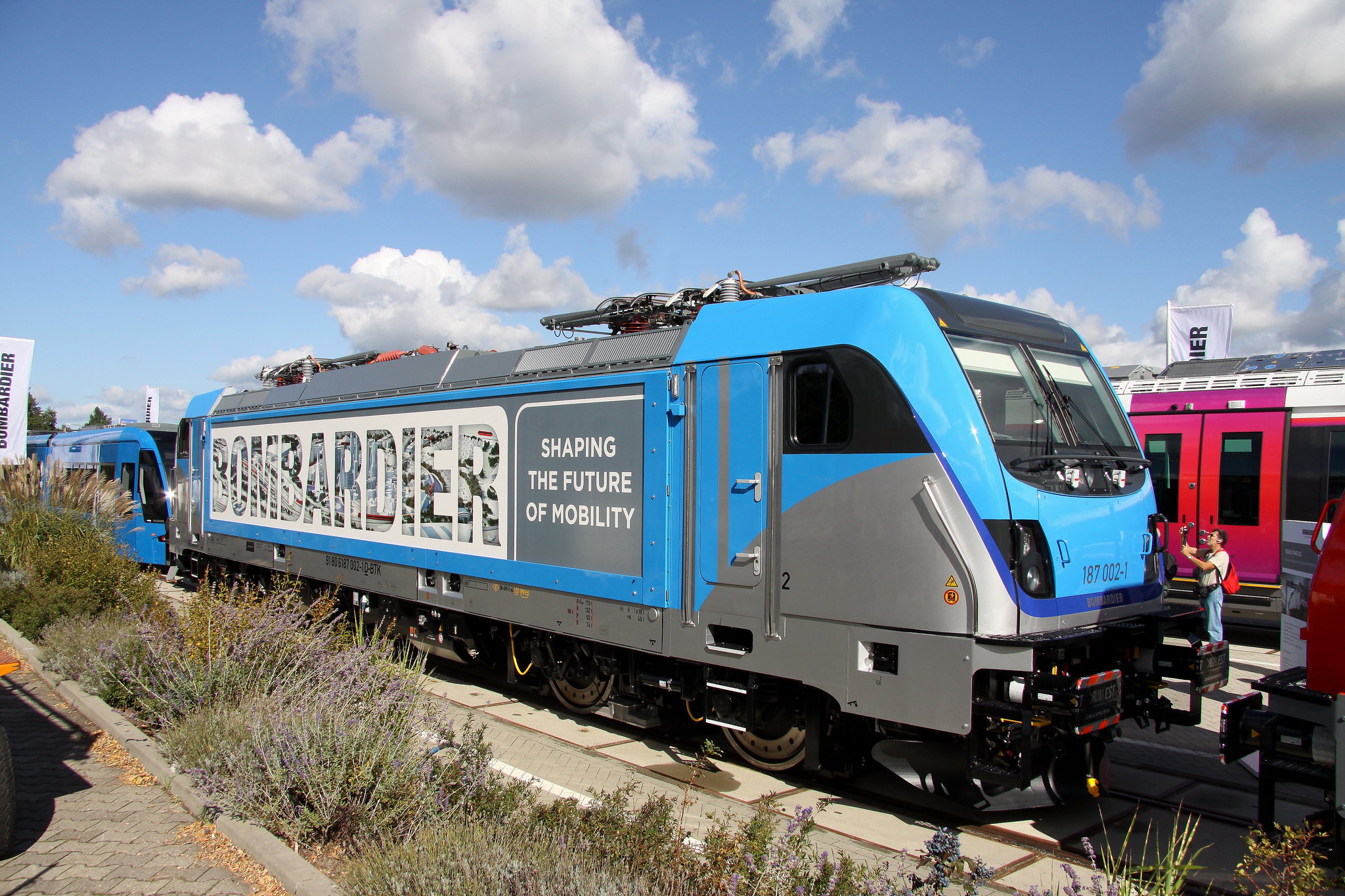 The mainline freight electric locomotive Traxx F140 AC3 with the last-mile function at InnoTrans 2012. Source: Vectron X4E/flickr.com
The mainline freight electric locomotive Traxx F140 AC3 with the last-mile function at InnoTrans 2012. Source: Vectron X4E/flickr.com
In 2015, the 2EV120 dual-system mainline electric locomotive was designed in Russia on the base of the Traxx platform for 1,520 mm railways. Engels Locomotive Works, a joint venture between Bombardier Transportation and First Locomotive Company, produced two prototypes and planned to launch the serial production of up to 150 locomotives a year. After three years of certification tests, Russian Railways declared in February 2019 that they did not need for a dual-system electric freight locomotive and rejected the purchase. Now the prototypes are available for sale as part of the bankruptcy case, along with technical documentation and equipment of the facility.
Vectron and Prima as a response from competitors
Siemens Mobility was the first to compete with Traxx. Back in the early 1990s, the company developed the three-phase motor EuroSprinter electric locomotives. The customers from Europe had a moderate interest in these locomotives, and they were not broadly accepted.
In 2010, Siemens Mobility unveiled the new four-axle Vectron locomotives. They received body shells and components from several EuroSprinter modifications. Four models were released. Along with 2.4 MW DE diesel- or 5.6 MW AC- or DC-operated models, the company offered a multi-system option, 6.4 MW MS. Since the DE had poor demand, it was replaced by the Dual Mode hybrid locomotive with diesel and AC traction. The first serial order for 80 Vectron electric locomotives came from the Finnish operator VR Group in 2014. Since then, over 20 countries have contracted a total of 1,600 Vectron locos. In 2018, the company introduced a “budget” Vectron, called the Smartron. This 5.6 MW electric locomotive was designed to operate on 15 kV AC lines in Germany with a maximum speed of 140 km/h. Later, the Smartron for 25 kV lines was developed for use in Bulgaria and Romania.
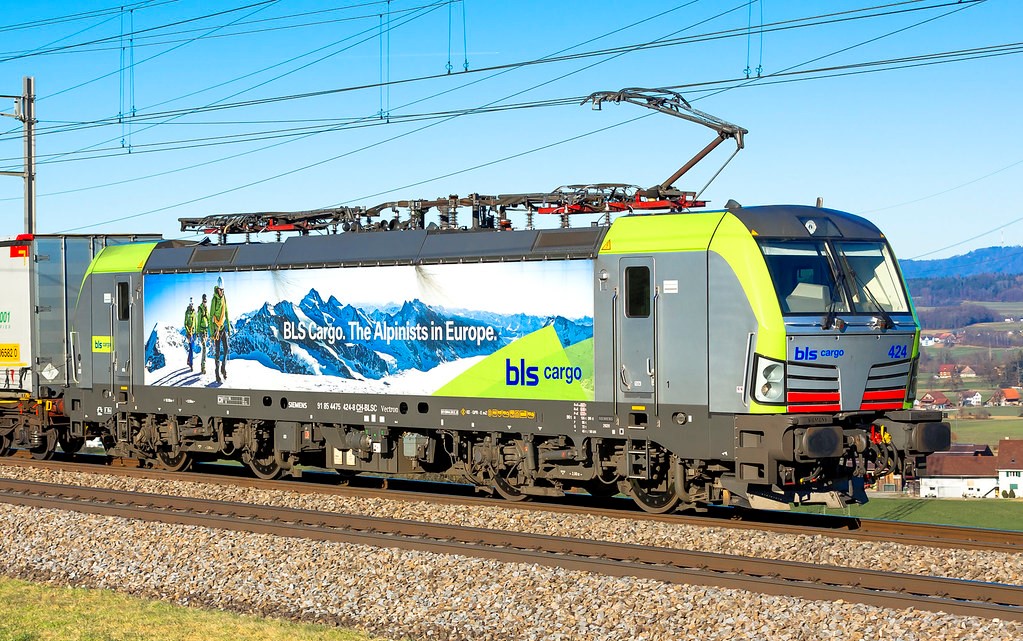 Vectron MS electric locomotive of BLS Cargo. Source: Thomas Naas/flickr.com
Vectron MS electric locomotive of BLS Cargo. Source: Thomas Naas/flickr.com
In a competition, Alstom introduced the Prima platform. It started developing the new loco back in 1998, after signing a contract with SNCF, France, for the supply of 240 electric locomotives to operate in the country and overseas. By 2008, Alstom had supplied over 1,700 Prima locomotives to different countries.
In 2008, Alstom released the Prima II, which was first sold to the Moroccan operator ONCF. This locomotive had a new motor with IGBT transistor converter, making it a four-system locomotive. Alstom developed four-axle versions suited for freight or passenger service, with a power range of 4 to 6.4 MW and a top speed of 140 to 200 km/h. Further, the company offered a six-axle 9.6 MW locomotive.
However, the emergence of the Prima II coincided with the financial crisis of 2008, and there was not enough enthusiasm from European operators along with the decline in freight traffic. Nevertheless, the locomotive drew attention from outside of Europe. The Prima II electric locomotives served as the basis for multiple modifications intended for different countries: Indian Railways ordered 800 WAG 12B, China Railways asked for over 700 HXD2, Kazakhstan Temir Zholy purchased over 379 KZ8A and KZ4AT, and Azerbaijan Railways were delivered 50 locomotives. Modified vehicles were also produced for Iran, the USA, Israel, and Syria. The Prima II technology was used in the development of TMH’s two electric locomotives in Russia, the passenger EP20 and the freight 2ES5.
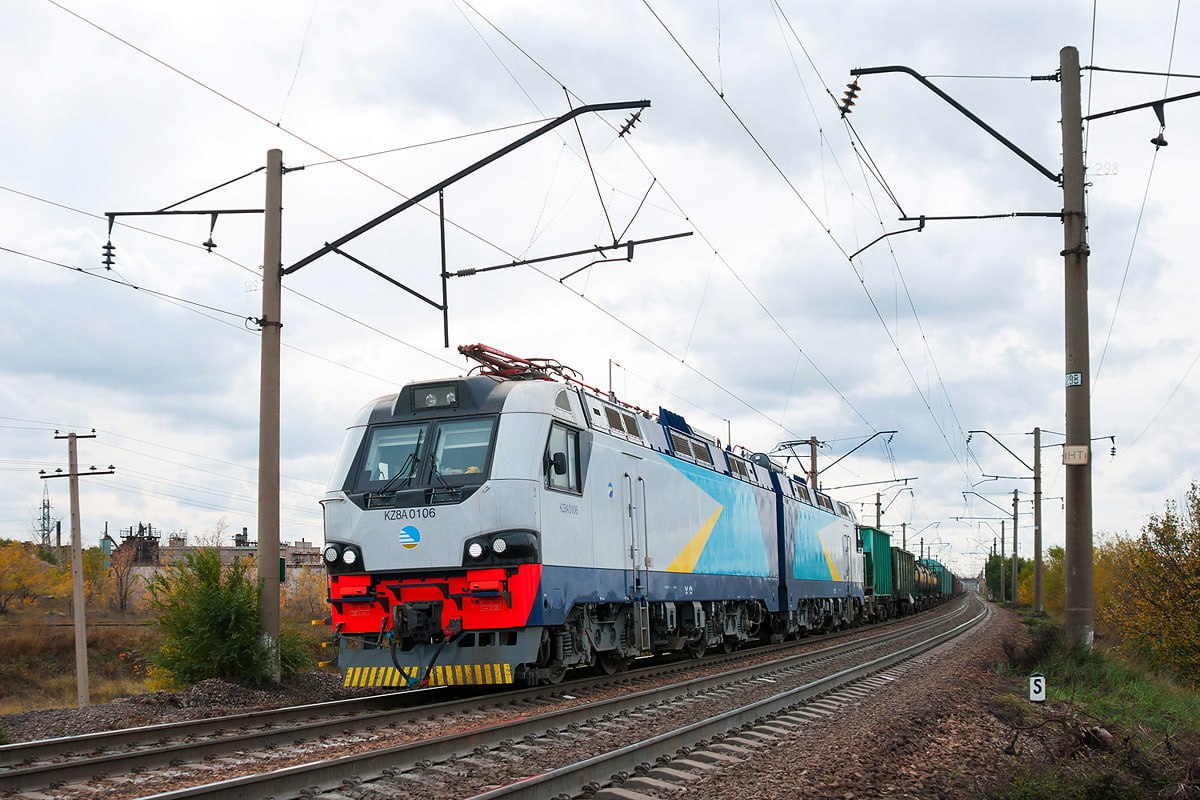 KZ8A electric locomotive in Kazakhstan. Source: Nikolay Bazhanov/railgallery
KZ8A electric locomotive in Kazakhstan. Source: Nikolay Bazhanov/railgallery
In 2021, Alstom acquired Bombardier Transportation and regained its position in the European locomotive traction market. Now the French manufacturer is continuing to improve the platform and has four options: the Traxx Universal and Traxx Hauler for freight service, the Traxx Passenger for passenger one, and the Traxx Shunter for shunting operations.





